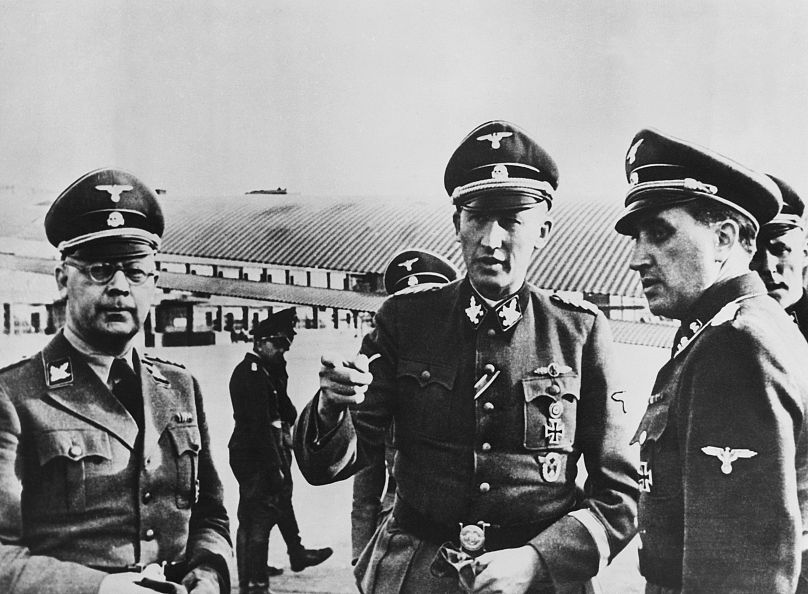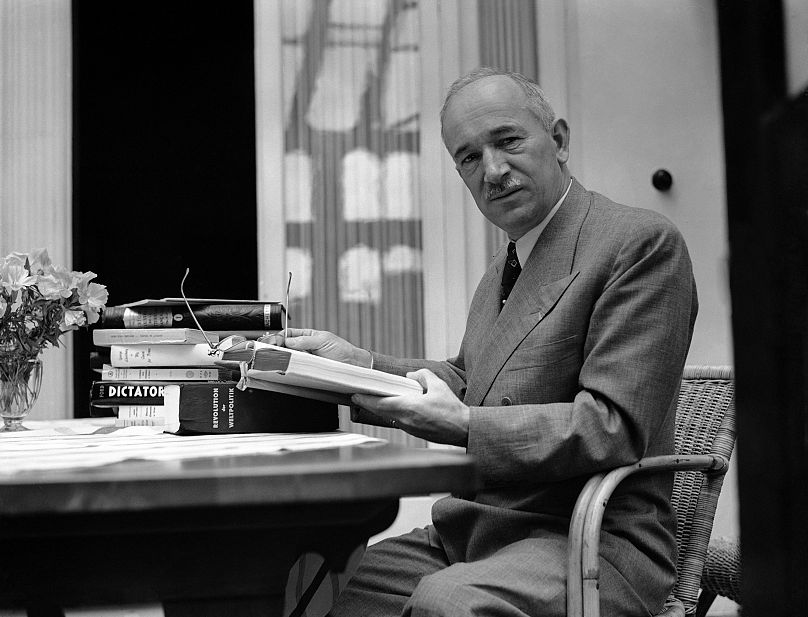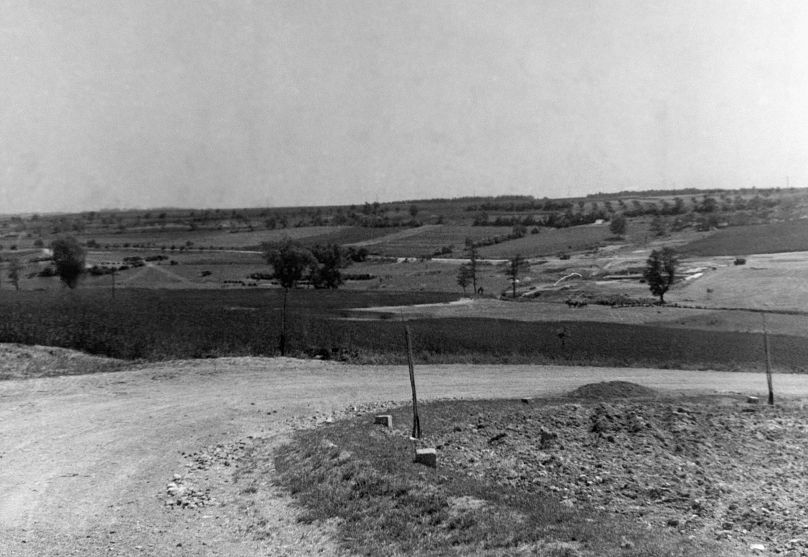- Hans Weber
- February 23, 2025
Marking Operation Anthropoid’s place in Czech history, 80 years on
Eighty years ago today, on the morning of May 27, 1942, Reinhard Heydrich was driving through Prague in an open-top Mercedes.
A deputy of Heinrich Himmler and a principal architect of the Holocaust, considered by some a possible successor to Adolf Hitler, Heydrich was also the acting Reichsprotektor of the Protectorate of Bohemia and Moravia, as the Nazi-controlled Czech lands were then known.
As Heydrich’s Mercedes passed through the district of Libeň, two British-trained paratroopers stepped out into the road.
Hitler telephoned from Prague and ordered the execution of 10,000 Czechs in retaliation. The killers, Gabčík and Kubiš were eventually found at the Church of St Cyril and St Methodius in Prague. Gabčík committed suicide. Kubiš was killed.
On June 10, wrongly believing that locals were part of the conspiracy, the Nazis massacred an estimated 340 people in the village of Lidice, not far from Prague. All the male inhabitants aged 14 to 84 were killed, and the entire village was burned to the ground. Days later, the Nazis did the same in the central village of Ležáky.
The assassination of one of the most senior Nazis, codenamed Operation Anthropoid, is today firmly a part of the Czech national consciousness.
“It is perceived as a heroic act and, together with other deeds of the resistance movement, it is a source of national pride,” said Filip Kostelka, a professor at the European University Institute. “It helps eclipse the memory of national humiliation resulting from the Czech passive subjugation to the Nazi occupation.”
To mark the 80th anniversary today, the National Museum in Prague is opening a new exhibition called “Nikdy se nevzdáme!” (We Will Never Give Up): the last cry of the paratroopers before their deaths. Elsewhere in the capital, a monument will be unveiled to Jindřiška Nováková, a 14-year old girl who helped to hide Gabčík and Kubiš after their attack on Heydrich.
How the assassination was viewed under the KSČ
The incident wasn’t always remembered so favourably. In 1948, after a brief spell of post-war democracy, the Communist Party of Czechoslovakia (the KSČ) launched a coup against their power-sharing partners.
But the new regime had a problem with lionising the assassins of Heydrich. The operation was masterminded by British intelligence and the Czechoslovak government-in-exile in London, led by former president Edvard Beneš. Most members of the new communist regime were based in Moscow during the war and played no part in the assassination.
As such, historians say that after 1948, the KSČ regime didn’t want to overly celebrate a mission that was orchestrated by Czechslovakia’s non-communist politicians in London, and which was led by the same politicians whom they had just ousted from office.
What’s more, if assassinating Heydrich was seen as the most courageous act of Czechoslovak resistance during World War II, it would greatly overshadow the resistance by communist agitators.
Such concerns were prescient even during the war. Historians still today debate the extent of Czech resistance to the Nazi occupation. “By 1945, only thirty partisan groups—most of these tiny and internally fragmented—were operating in the Czech lands. In short, resistance was very limited,” writes the historian Andrea Orzoff in her book Battle for the Castle: The Myth of Czechoslovakia in Europe, 1914-1948. Even during the war, she adds, Czech communist partisans were worried that this “would stain the national honour.”
Beneš, in London, feared the same. According to Orzoff, he was advised by resistance groups to target Czech collaborators instead of Heydrich, but he decided on the Nazi grandee in a bid to impress his Western minders, and to make sure Czechoslovakia’s struggle remained on the Allied governments’ agendas.
Historian Chad Bryant in Prague in his Black: Nazi Rule and Czech Nationalism writes: “The lack of Czech resistance to the Nazis was damaging his diplomatic position and endangering his goals of reestablishing Czechslovakia along its pre-Munich borders.”
Attempting to outmuscle the communist resistance in Czechoslovakia, the decision to assassinate Heydrich, Benes thought, “promised to spur resistance within the Protectorate and impress Allied leaders.”
A focus on Nazi reprisals
Rather than the assassination of Heydrich, the communist regime in Czechoslovakia focused on the Nazi reprisals.
Historians still debate why Lidice and Ležáky, two small villages, were targeted. The likely explanation is that the Nazis suspected the inhabitants were helping the resistance. According to the KSČ regime, however, it was because the villages were supposedly hotbeds of radical left-wing activity.
“The Czechoslovak regime instrumentalised Lidice, portraying it as a communist village that suffered because of its inhabitants’ political engagement,” said Kostelka.
Some historians quietly questioned this interpretation even at the time. Most of the villagers were probably social democrats, not communists. There appears little evidence the Nazis targeted Lidice for ideological reasons, others argued.
Yet it fitted an ideological narrative for the communists: fellow ideologues in Lidice were the victims of an overzealous assassination plot concocted by Western governments and by non-communist Czechoslovaks in London.
“The communist regime regarded the assassination as an irresponsible act because it caused great repression by the Nazis,” says Lubomír Kopeček, a political science professor at Masaryk University. Not that the assassination was overlooked completely under the communist era. Atentát, a Czechoslovak film released in 1964, is regarded by some historians as still the most accurate depiction of the assassination.
An operation canonised in Czech history
After the communist regime fell in 1989, a “fierce debate” still raged about the benefits of the assassination and the victims, says Kopeček. The line of the former communist regime was defended by those still loyal to the ideology.
The Communist Party of Bohemia and Moravia (KSČM) remained one of the Czech Republic’s largest parties until it failed to win seats in parliament for the first time at last year’s general election.
On the whole, though, the memory of the assassination has been canonised in Czech history. The Operation Anthropoid Memorial, located where Heydrich was assassinated in Libeň, opened in 2009.
Last year, MPs debated making May 27 a special day of celebration. It has also been a topic of recent films made by English-language directors, including The Man with the Iron Heart, released in 2017, and Anthropoid, a year earlier.
“The dominant view both in the Czech Republic and abroad is that the assassination was a glorious moment of the anti-Nazi resistance,” was Kostelka’s assessment. “What followed was sadly probably more severe than anticipated, but it was the price for freedom.”
Recent posts
See AllPrague Forum Membership
Join us
Be part of building bridges and channels to engage all the international key voices and decision makers living in the Czech Republic.
Become a member


